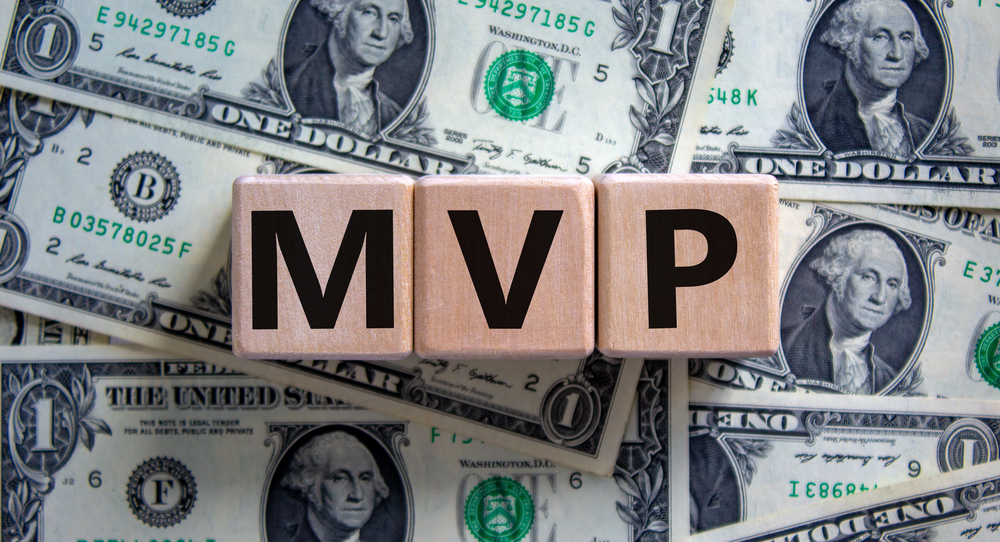Managing your finances might not have the otherworldly intrigue of discovering alien intelligence, but the results can feel just as transformative. When you master the finance habits for investing with home loan repayments, you’re essentially decoding a complex system that most people find bewilderingly foreign. The truth is, effective financial management isn’t about restricting your lifestyle—it’s about creating a framework that allows your money to work harder for you while you sleep.
The connection between disciplined financial habits and long-term wealth creation is stronger than most people realize. Every dollar you save on home loan interest through smart planning is a dollar that can be redirected toward building your investment portfolio. Similarly, maintaining excellent credit habits doesn’t just open doors to better loan terms—it creates a ripple effect that touches every aspect of your financial life, from insurance premiums to rental applications.
Understanding Your Financial Profile
Before diving into specific strategies of finance habits for investing, you need a clear picture of where you stand financially. Think of this as creating a detailed map before embarking on a long journey—without it, you’re navigating blind.
Assess Your Income and Expenses
Start by documenting every source of income, including your primary salary, freelance work, rental income, and investment returns. This comprehensive view helps you understand your true earning capacity. Next, categorize your monthly expenses into three buckets: essentials (rent, utilities, groceries), discretionary (entertainment, dining out), and irregular costs (annual insurance premiums, car maintenance).
The magic happens when you identify gaps between earning and spending. Even small adjustments—like reducing discretionary spending by 10%—can free up substantial amounts for loan prepayments or investments. Most people are surprised to discover they’re spending 20-30% more than they realize on non-essential items.
Check Your Credit Score
Your credit score is the financial equivalent of a first impression, and it matters enormously when securing favorable home loan rates. Lenders use this three-digit number to assess your reliability as a borrower. A strong credit score can save you thousands in interest over the life of your loan.
One of the recommended finance habits for investing is using credit cards responsibly. This is one of the fastest ways to build or improve your score. This means paying bills on time, keeping credit utilization below 30%, and maintaining a diverse credit mix. Many free tools and apps now allow you to monitor your credit report regularly, alerting you to changes or potential fraud.
Evaluate Existing Debts
Create a comprehensive list of all your debts—personal loans, housing loans, credit card balances, and any other obligations. Seeing everything in one place can be sobering, but it’s essential for developing a realistic repayment strategy.
Prioritize high-interest debts first, as these cost you the most money over time. Credit card debt, often carrying interest rates of 15-25%, should typically take precedence over lower-interest housing loans. Develop a debt repayment schedule that’s aggressive enough to make progress but sustainable enough that you won’t burn out and abandon the plan.
Smart Credit Card Habits for Long-Term Savings
Credit cards are powerful financial tools that can either build or destroy your financial future. The key lies in understanding how to harness their benefits while avoiding their pitfalls.
Choosing the Right Credit Cards
Not all credit cards are created equal. Some offer low interest rates, others provide generous cashback or rewards programs, and premium cards may include valuable perks. If you travel frequently, you might want to discover credit cards with access to airport lounges at Singsaver, which can enhance your travel experience while providing tangible value.
Avoid accumulating multiple cards unless you have a specific strategy for managing them. More cards mean more due dates to track, more potential for missed payments, and more temptation to overspend.
Responsible Usage Strategies
The cardinal rule of credit card usage is simple: pay your full balance every month. When you carry a balance, you’re essentially borrowing at extraordinarily high interest rates—often 18% or more annually. This negates any benefits from rewards programs and creates a debt spiral that’s difficult to escape.
Use credit cards for planned purchases, not impulsive spending. Treat your credit card like a debit card with benefits—only charge what you can immediately afford to pay off. Track your rewards and points systematically, ensuring you’re extracting maximum value from every purchase.
Impact on Home Loan Applications
When you apply for a housing loan, lenders scrutinize your credit card usage patterns closely. Consistent, responsible credit card behavior demonstrates financial discipline and improves your creditworthiness. This can translate to lower interest rates and better loan terms, potentially saving you tens of thousands over the loan’s lifetime.
Conversely, maxed-out credit cards signal financial stress and reduce your borrowing potential. Lenders may interpret high credit utilization as a sign you’re overleveraged, leading to higher interest rates or loan rejection.
Planning and Managing Your Home Loan
Your home loan will likely be the largest financial commitment of your life, making it crucial to approach it with smart finance habits for investing, rather than simply accepting whatever terms your bank initially offers.
Types of Home Loans
Home loans generally fall into two categories: fixed-rate and floating-rate. Fixed-rate loans lock in your interest rate for a specified period, providing predictable monthly payments regardless of market fluctuations. This stability helps with budgeting but means you won’t benefit if interest rates drop.
Floating-rate loans, conversely, adjust with market conditions. When rates fall, your EMI decreases; when rates rise, you pay more. These loans typically start with lower rates than fixed options, making them attractive if you expect rates to remain stable or decline. The choice depends on your risk tolerance, market outlook, and how much you value payment predictability.
Determining Your Eligibility
Lenders evaluate several factors when determining your home loan eligibility. Your income level sets the upper limit of what you can borrow, while existing debts reduce the amount lenders are willing to extend. Your credit score acts as a multiplier—excellent credit opens doors to higher loan amounts at better rates.
Working with experienced brokers can streamline this process significantly. They understand lender requirements intimately and can match your profile with institutions most likely to offer favorable terms. Before committing, try using a housing loan calculator to understand how different interest rates and tenures affect your monthly payments and total interest costs.
Prepayment and EMI Optimization
One of the most powerful strategies for reducing home loan costs is making extra payments toward your principal whenever possible. Even modest additional payments—say, $100-$200 monthly—can shave years off your loan tenure and save substantial interest.
Consider directing windfalls like bonuses, tax refunds, or inheritance toward loan prepayment. Some borrowers use the “debt snowball” method, taking the amount they were paying on a cleared debt and adding it to their home loan payment. This accelerates payoff without requiring new funds from their budget.
Budgeting and Investment Strategies Alongside a Home Loan
Owning a home doesn’t mean abandoning other financial goals. With careful planning, you can service your loan while building wealth through investments.
Creating a Balanced Budget
An effective budget allocates funds across three critical areas: loan EMI, savings, and investments. A common framework is the 50-30-20 rule—50% of income toward necessities (including housing), 30% toward discretionary spending, and 20% toward savings and investments.
Maintain an emergency fund covering 3-6 months of expenses before aggressively pursuing investments. This buffer prevents you from defaulting on loan payments during unexpected job loss, medical emergencies, or economic downturns. Without this cushion, any financial shock could derail your entire plan.
Investing While Paying Off Loans
The question of whether to invest while carrying debt doesn’t have a one-size-fits-all answer—it depends on interest rates, risk tolerance, and time horizons. If your home loan carries 4% interest and you can reliably earn 8% through investments, continuing to invest while making regular loan payments makes mathematical sense.
For conservative investors, low-risk options like fixed deposits or government bonds provide steady returns without stomach-churning volatility. Those comfortable with more risk might allocate funds to index funds or diversified equity portfolios, which historically deliver higher long-term returns.
Dollar-cost averaging—investing a fixed amount regularly regardless of market conditions—is particularly effective when balancing loan payments with wealth building. This approach removes emotion from investment decisions and builds positions gradually over time.
Tax Planning Benefits
Home ownership offers significant tax advantages in many jurisdictions. You can typically deduct home loan interest from taxable income, effectively reducing your loan’s after-tax cost. Principal repayments may also qualify for tax deductions up to specified limits.
Strategic tax planning, guided by finance habits for investing, ensures you’re maximizing these benefits without jeopardizing loan repayments. Contributing to retirement accounts, health savings accounts, and other tax-advantaged vehicles can further reduce your tax burden, freeing up more money for loan prepayment or investments.
Using Brokers to Your Advantage

Mortgage brokers serve as intermediaries between borrowers and lenders, and their expertise can be invaluable when navigating the complex home loan landscape.
What Brokers Do
Professional brokers maintain relationships with dozens of lenders, giving them access to loan products and rates that may not be publicly advertised. They compare these options based on your specific financial profile, identifying opportunities for better rates, lower fees, or more flexible repayment terms.
Beyond just finding loans, brokers provide insights on market timing, help you understand fine print that might otherwise be confusing, and can negotiate on your behalf, leveraging finance habits for investing. Their experience means they’ve seen countless loan scenarios and know which strategies work best in different situations.
How to Select a Reliable Broker
Not all brokers operate with the same level of professionalism or integrity. Check credentials carefully—reputable brokers should be licensed and registered with relevant financial authorities. Read reviews from previous clients, and don’t hesitate to ask for references.
Transparency regarding fee structures is non-negotiable. Understand exactly how your broker is compensated—whether through lender commissions, borrower fees, or both. This helps you assess whether their recommendations serve your interests or theirs.
Cost vs. Benefit Analysis
While brokers charge fees (or receive commissions from lenders), these costs are typically small relative to the savings they can secure. A broker who negotiates even a 0.25% better interest rate on a $300,000 loan can save you thousands over the loan’s life—far exceeding their fees.
Brokers also save you considerable time and effort. Rather than approaching multiple lenders individually, filling out numerous applications, and comparing complex terms yourself, the broker handles this legwork. For busy professionals, this time savings alone can justify the cost.
Avoiding Common Mistakes
Many borrowers focus exclusively on the advertised interest rate while overlooking hidden fees—processing charges, prepayment penalties, administrative costs, and insurance requirements. These can add significantly to your loan’s true cost.
Another mistake is accepting the first loan offer without exploring alternatives. This is where home loan brokers in Adelaide or your local area can provide immense value, comparing multiple lenders to find options you might never discover independently.
Building Financial Discipline for Long-Term Wealth
Sustainable wealth isn’t built through occasional dramatic actions but through consistent, disciplined habits maintained over years and decades.
Regular Monitoring and Review
Financial fitness requires ongoing attention, not just annual check-ins. Review your credit card statements, loan balances, and investment performance quarterly. This regular monitoring helps you spot concerning trends before they become crises and identify opportunities for optimization.
As your income grows or expenses change, adjust your budget and repayment strategies accordingly. Life isn’t static—your financial plan shouldn’t be either.
Avoiding Impulsive Financial Decisions
Impulse spending is one of the greatest threats to financial security. Each unnecessary purchase represents money that could have reduced loan interest or grown through compound investment returns. Before making significant purchases, implement a 48-hour waiting period. This cooling-off period helps distinguish genuine needs from temporary wants.
Delayed gratification might feel unsatisfying in the moment, but it pays enormous dividends long-term. The discipline to consistently prioritize loan repayment and investment growth over immediate consumption separates those who build wealth from those who perpetually struggle financially.
Setting Clear Financial Goals
Effective financial planning requires specific, measurable goals across different time horizons. Short-term goals might include paying off high-interest credit card debt or building a three-month emergency fund. Medium-term objectives could focus on eliminating a significant portion of your home loan principal or saving for a child’s education.
Long-term goals, shaped by finance habits for investing, typically center on achieving financial independence—reaching a point where investment income covers living expenses, making work optional rather than necessary. Breaking this ultimate goal into smaller milestones makes it feel achievable rather than impossibly distant.
Strategies to Save on Home Loan Interest
Even small reductions in interest paid can translate to enormous savings over a 15-30 year loan term. Here are proven strategies for minimizing these costs.
Opting for Shorter Tenures (If Affordable)
Choosing a shorter loan tenure—say 15 years instead of 30—dramatically reduces total interest paid, though it increases your monthly EMI. If your budget can accommodate higher payments, this strategy builds equity faster and frees you from debt sooner.
Run the numbers carefully before committing, using finance habits for investing to guide you. A dramatically higher EMI might stretch your budget uncomfortably, leaving no room for emergencies or other financial goals. Balance ambition with pragmatism.
Consider Top-up Loans Carefully
Top-up loans allow you to borrow additional funds against your property, typically at rates slightly higher than your original home loan but lower than personal loans or credit cards. These can be smart financing tools for renovations that increase property value or for consolidating higher-interest debts.
However, top-up loans extend your debt burden and increase total interest paid. Compare rates carefully—using a broker can help ensure you’re getting competitive terms rather than accepting whatever your current lender offers by default.
Refinancing Opportunities
When market interest rates drop significantly below your current rate, refinancing can reduce your EMI or shorten your tenure while maintaining the same payment. Typically, refinancing makes sense when you can secure at least a 0.5-1% rate reduction and plan to stay in the property long enough to recoup closing costs.
Timing matters enormously with refinancing. Monitor interest rate trends and act when favorable conditions emerge. Waiting too long might mean missing optimal windows, while refinancing too frequently can rack up fees that negate savings.
Conclusion
Mastering your finances, through disciplined finance habits for investing, requires the same systematic approach as any complex skill—consistent practice, ongoing education, and willingness to adjust strategies as circumstances change. Responsible credit card usage strengthens your credit profile while reducing borrowing costs. Strategic home loan planning, particularly when leveraging professional brokers’ expertise, can save tens of thousands in interest over time. Balanced budgeting that accommodates both debt repayment and investment growth ensures you’re building wealth even while servicing loans.
Find a Home-Based Business to Start-Up >>> Hundreds of Business Listings.
















































